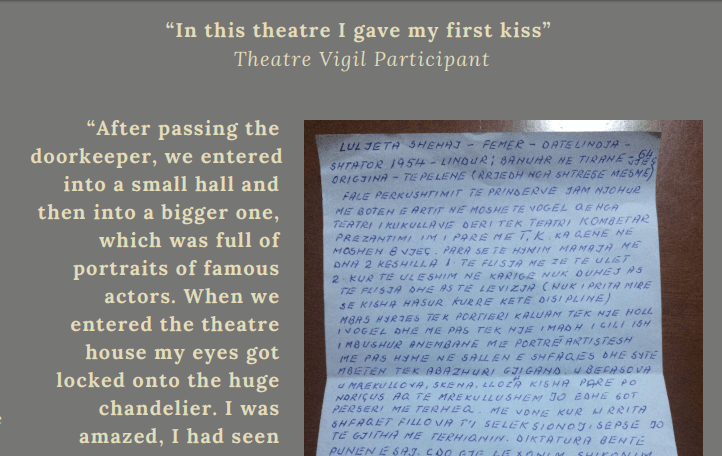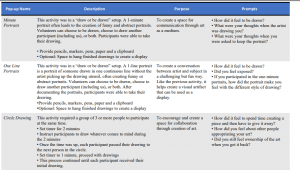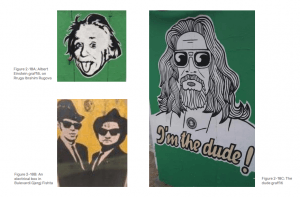Transmedia storytelling is a technique that creates an elaborate story through multiple media platforms that all add a unique part to the story. The technique allows for personal contribution to the story as well as interaction with the story and other individuals. Many examples exist but the two most common ones are Harry Potter and Star Wars. The excitement of the two most well known franchises will be the foundation of the explanation of transmedia storytelling. The following guide will hopefully give insight into the possibilities of enhancing your IQP.
What is Transmedia Storytelling?
Books
- Star Wars and the History of Transmedia Storytelling
- A look at the effect Star Wars had on the development of transmedia storytelling.
- Getting Started with Transmedia Storytelling
- An overview of the different aspects of transmedia storytelling and the various types of implementation.
- Transmedia Storytelling Strategy
- The various approaches franchises had to involve transmedia storytelling within the production and post production.
Papers
-
The MARVEL Cinematic Universe of Transmedia Narrative
- A look into the MARVEL universe and how the franchise influenced the development of transmedia storytelling.
Blog
- Transmedia Storytelling: Building Worlds For and With Fans
- A blog that goes into the principles of transmedia storytelling and the influence of different franchises.
- Transmedia Storytelling in The Hunger Games
- An interactive site on the Hunger Games and the reason for the franchise being a Hollywood success.
Franchises
Star Wars as a Transmedia Story
- The use of elements from Star Wars to explain the transmedia storytelling progression of the movie Star Wars.
The Creation of the Marvel Cinematic Universe through Transmedia Storytelling
- The use of transmedia storytelling to connect the movies to one another but also to integrate the fan experience within the franchise.
Harry Potter: A Transmedia Experience
- From the movies, to the books, to the robes, to Pottermore and to Universal Studios, Harry Potter has integrated the fan into every part of the Harry Potter world.
Video Games
The Creation of Dragon Age through Transmedia Storytelling
- From book to movie to comics, Dragon Age has expanded far past the traditional landscape of video game creation.
Storytelling to Develop Video Games
- The creation of a video game is centered on the development of the story within the game and outside of the game.
The Creation of the Pokemon Universe through Transmedia Storytelling
- The Pokemon Universe is created through video games, a TV show, card games, stuffed animals and the continued expansion of the Pokemon universe to include more Pokemon.
Transmedia Storytelling and the IQP
Transmedia Storytelling is based off of 7 Principles created by Henry Jenkins which are listed below (there is 10 due to the split up of 3 comparisons). Each principle has been modified to reflect an aspect of the IQP.
Original Principles
- Spreadability: The capacity of the public to engage actively in the circulation of media content through social networks and in the process expand its economic value and cultural worth.
- Drillability: The ability to drill down into the depths of a story
- Continuity: A ‘unified experience’ which is ‘systematically’ developed across multiple texts.
- Multiplicity: Alternative retellings, seeing the characters and events from fresh perspectives.
- Immersion: The ability of consumers to enter into fictional worlds.
- Extractability: The fan takes aspects of the story away with them as resources they deploy in the spaces of their everyday life.
- Worldbuilding: Constructed interconnecting worlds which link together stories scattered across publications. This becomes the pitch for a story.
- Seriality: Creates meaningful and compelling story chunks and then disperses the full story across multiple installments.
- Subjectivity: Giving a different perspective to the story – by developing content on a secondary character, from their point of view.
- Performance: Areas where producers and fans can make their own contributions.
Modified Principles for IQP
- Spreadability: The story about IQP is told across multiple platforms such as the final paper, social media posts, reflections and retelling of experiences
- Drillability: The ability of students to share the IQP experience in depth through reflections of the activities done on IQP
- Continuity: The continuation of past projects to the current years’ projects. The ability to connect projects that have been done to projects that are being done.
- Multiplicity: The set of new projects for each site each year reflect new experiences and add new perspectives.
- Immersion: The ability of students who have not gone on IQP to understand the experience and projects of various sites through immersive media.
- Extractability: The ability of students who have not gone on IQP to learn skills and methods from IQPs. The impact of the IQP on those involved should be portrayed as well.
- Worldbuilding: Every IQP site is a world. The addition of groups of projects each year is the expansion and development of the world.
- Seriality: Each IQP is part of a sites series, and each IQP adds as well as tells another part of the story.
- Subjectivity: The students, sponsors, and communities experiences with the IQP. A development of the impact the IQP had on students and communities. Each contribution should be told from their own perspective
- Performance: The ability of the project to allow input from people not directly involved with the project and be open to contribution such as comments or a blog that can be built upon.
Examples of Transmedia Storytelling within IQPs
An Exploration of Sense of Place: Tiranas Historic Center
An IQP from Tirana, Albania in B-Term of 2018. The IQP looked at the destruction of a historic building in the center of Tirana. The students created a memory box that allowed locals to place personal stories to remember the building they had been fond of throughout their life.



 Public art displays
Public art displays